Assyrian Wedding Traditions
Date: February 13, 2023
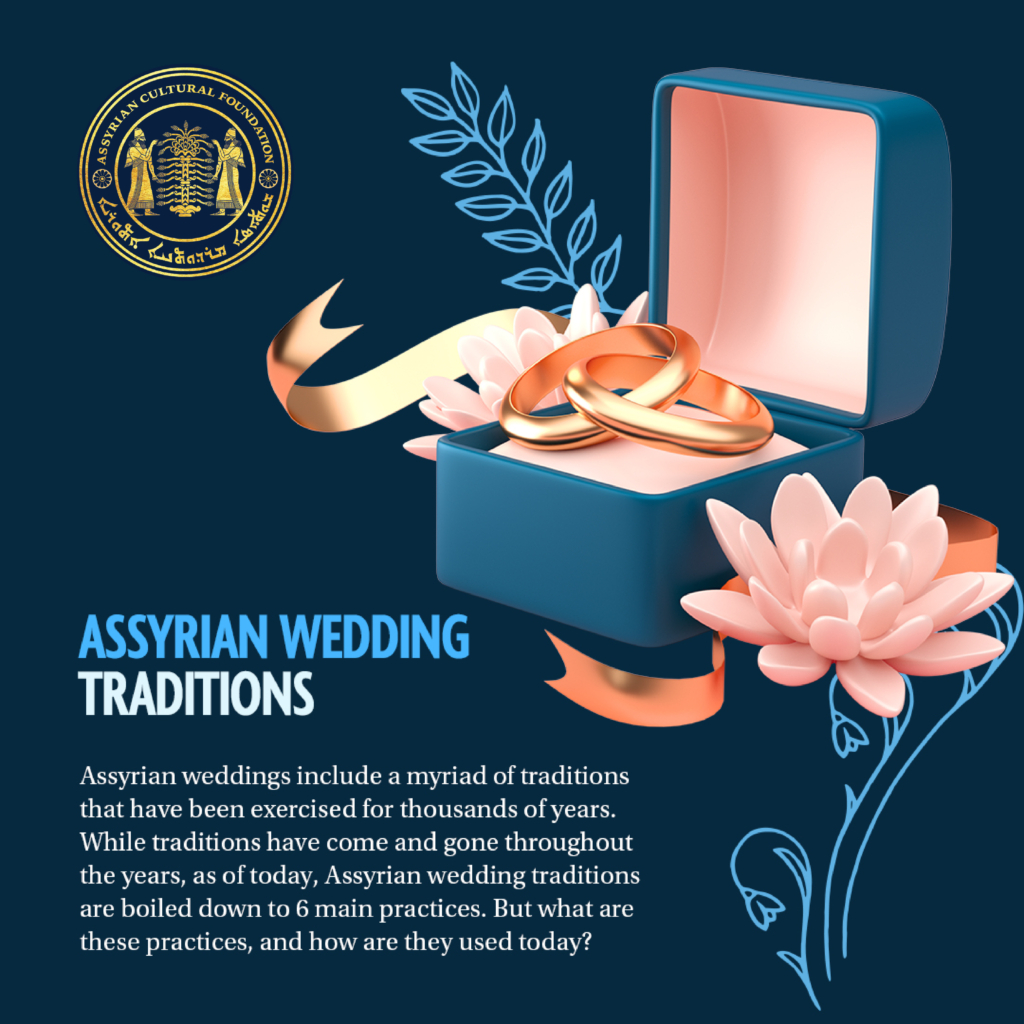
Assyrian weddings include various traditions that have been exercised for centuries. As of today, Assyrian wedding traditions are boiled down to at least 7 main practices. What are these practices and how are they used today?
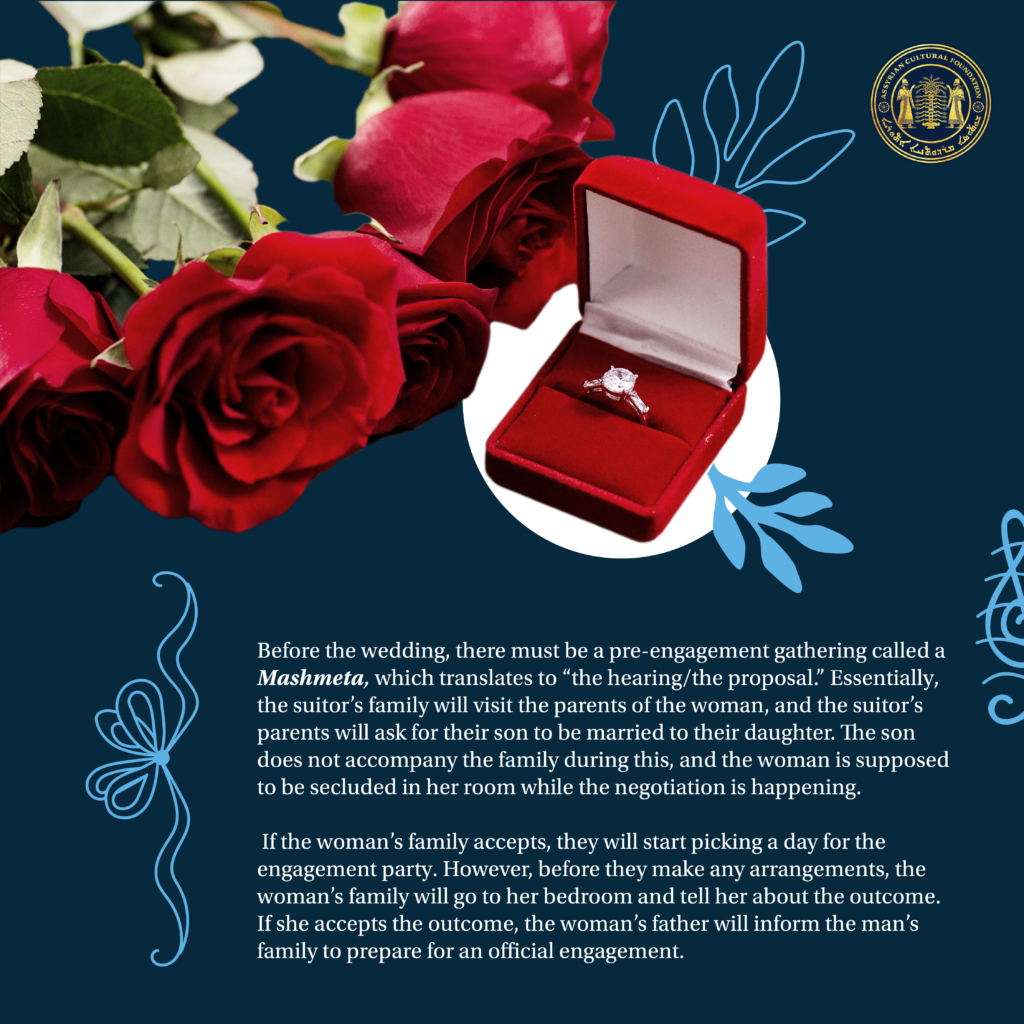
Before the wedding, there must be a pre-engagement gathering called a Mashmeta, which translates to “the Hearing / the proposal”. Essentially, the suitor’s family will visit the parents of the woman, and the suitor’s parents will ask for their son to be married to their daughter. The son does not accompany his family during this, and the woman is supposed to be in her room secluded, while the negotiation is happening. If the woman’s family accepts, they will start picking a day for their engagement party. However, before they make any arrangements, the woman’s family will go to her bedroom and tell her about the outcome. If she accepts the outcome, the woman’s father will inform the man’s family to prepare for an official engagement.
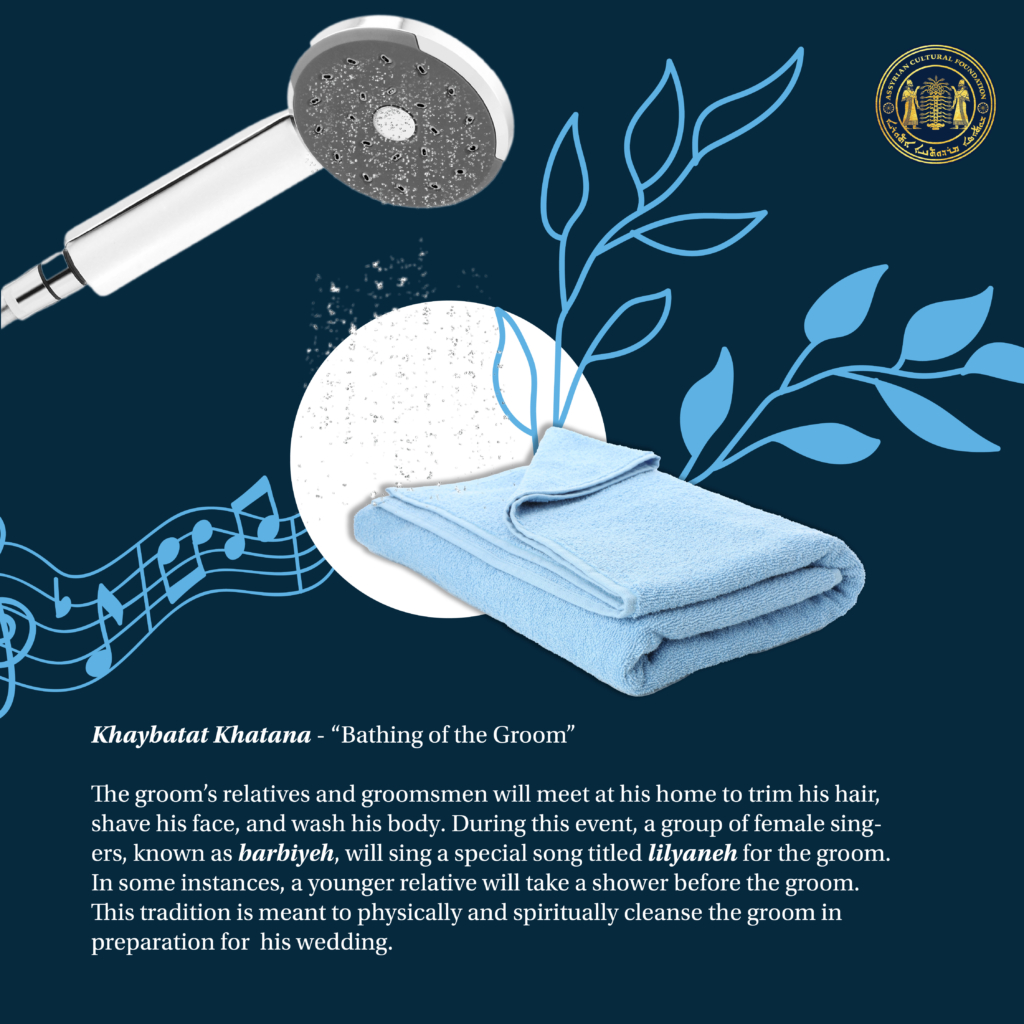
Khaybatat Khatana / Bathing of the groom, his relatives and groomsmen will meet at his home to trim his hair, shave his face, and wash his body. During this event, a group of female singers, known as barbiyeh, will sing a special song titled lilyaneh for the groom. In some instances, a younger relative will take a shower before the groom. This tradition is meant to physically and spiritually cleanse the groom in preparation for his wedding.
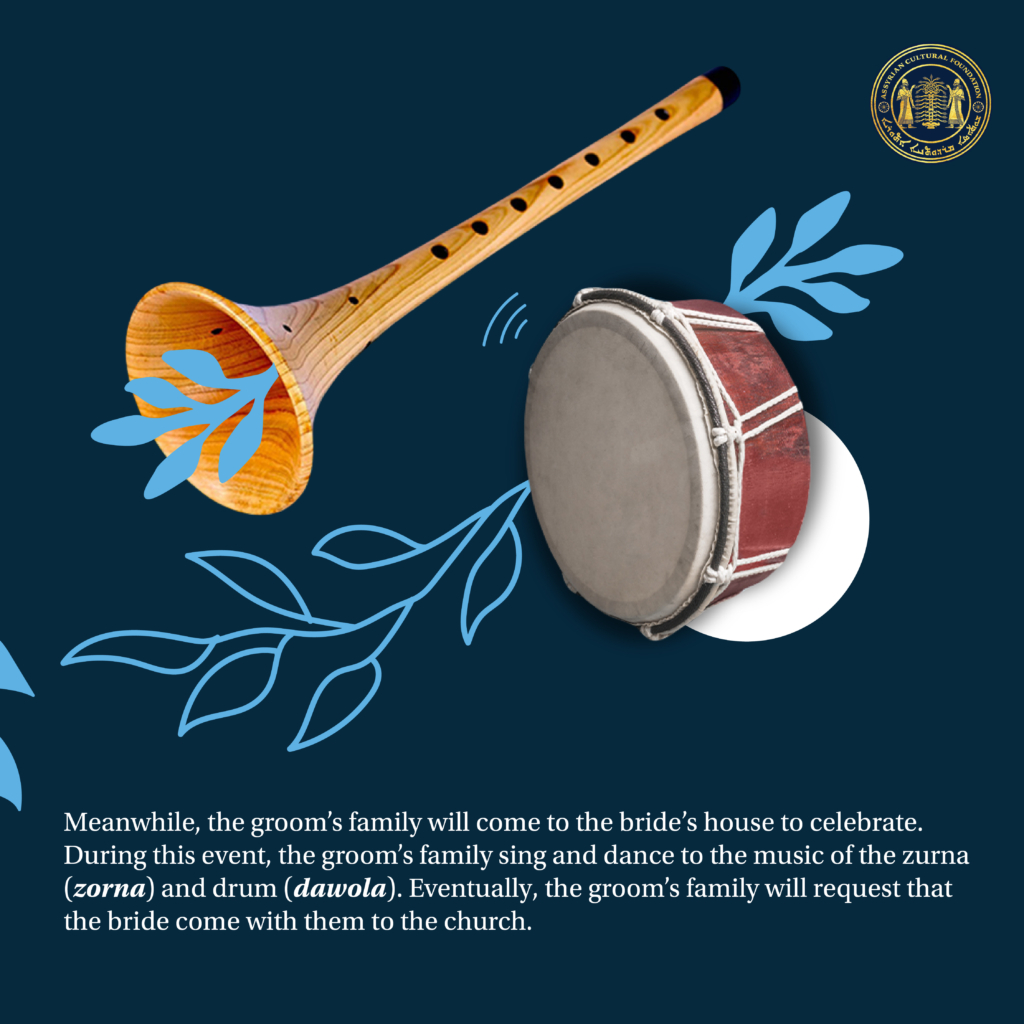
Barbiyeh will sing and make kileche to take and give to the attendees at the church the day of the wedding ceremony.
Meanwhile, the groom’s family will come to the bride’s house to celebrate. During this event, the groom’s family sing and dance to the music of the zurna (zorna) and bass drum (dawola). Eventually, the groom’s family will request that the bride come with them to church.
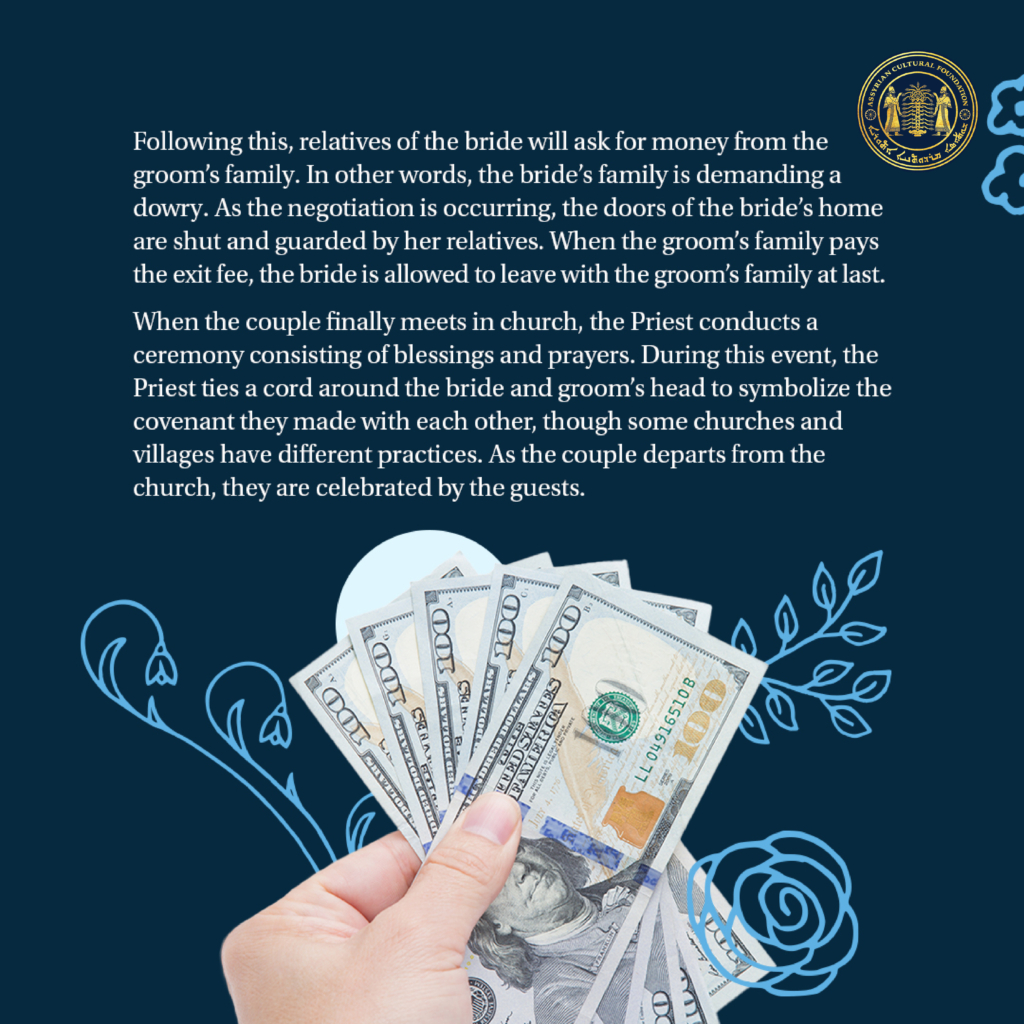
Following this, relatives of the bride will ask for money from the groom’s family. In other words, the bride’s family is demanding a dowry. As the negotiation is occurring, the doors of the bride’s home are shut and guarded by her uncle. When the groom’s family pays the exit fee, the bride is allowed to leave with the groom’s family at last.
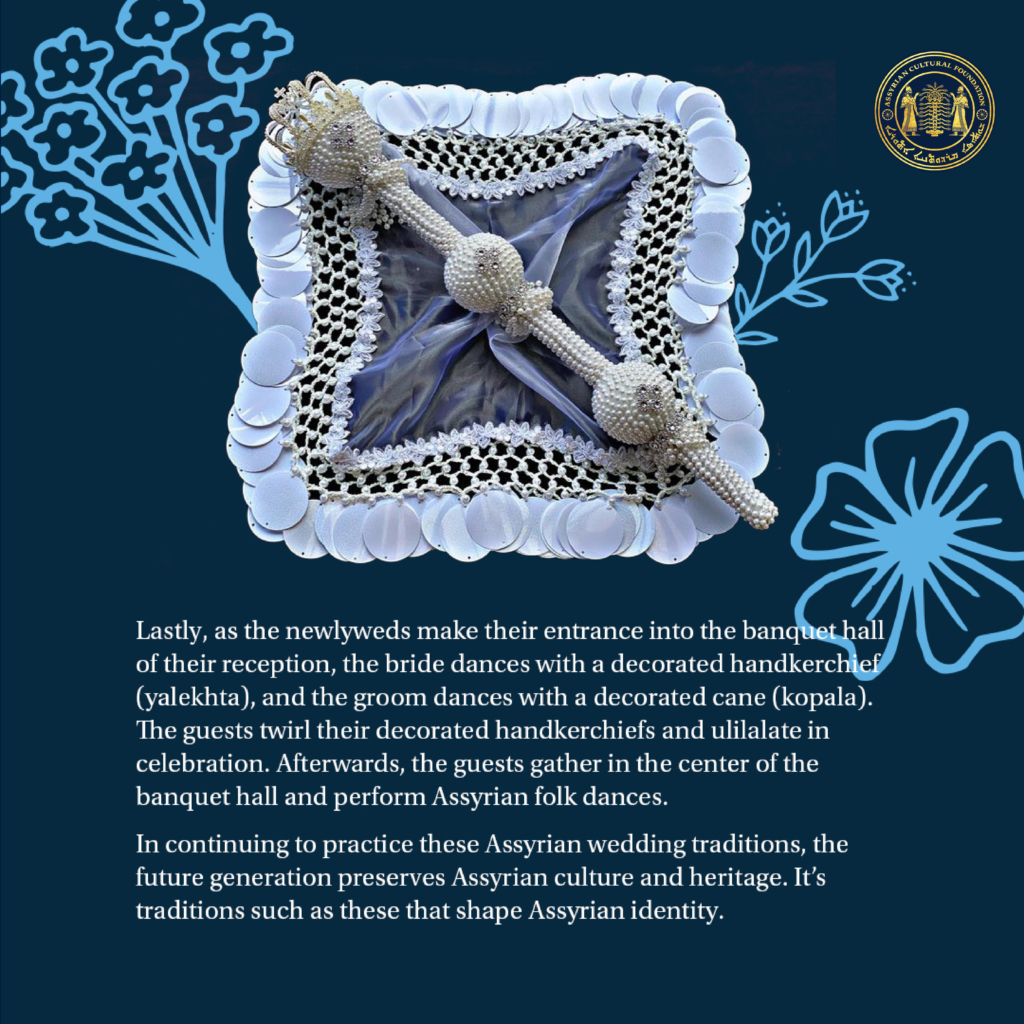
As the newlyweds make their entrance into the banquet hall of their reception, the bride dances with a decorated handkerchief, known as the yalekhta, and the groom dances with a decorated cane, known as the kopala. Concurrently, the guests twirl their decorated handkerchiefs, and ululate in celebration. Afterwards, the guests will gather in the center of the banquet hall and perform Assyrian folk dances. Some relatives will sit on the bride’s and groom’s chair and request that they must be paid or get invited on an outing. When this request is accepted, they will get up and let the groom and bride sit down.
Altogether, these traditions of an Assyrian wedding preserve Assyrian culture and heritage. It’s traditions, such as these, that shape Assyrian identity.
Published by: Brian Banyamin
Written by: Sarah Gawo

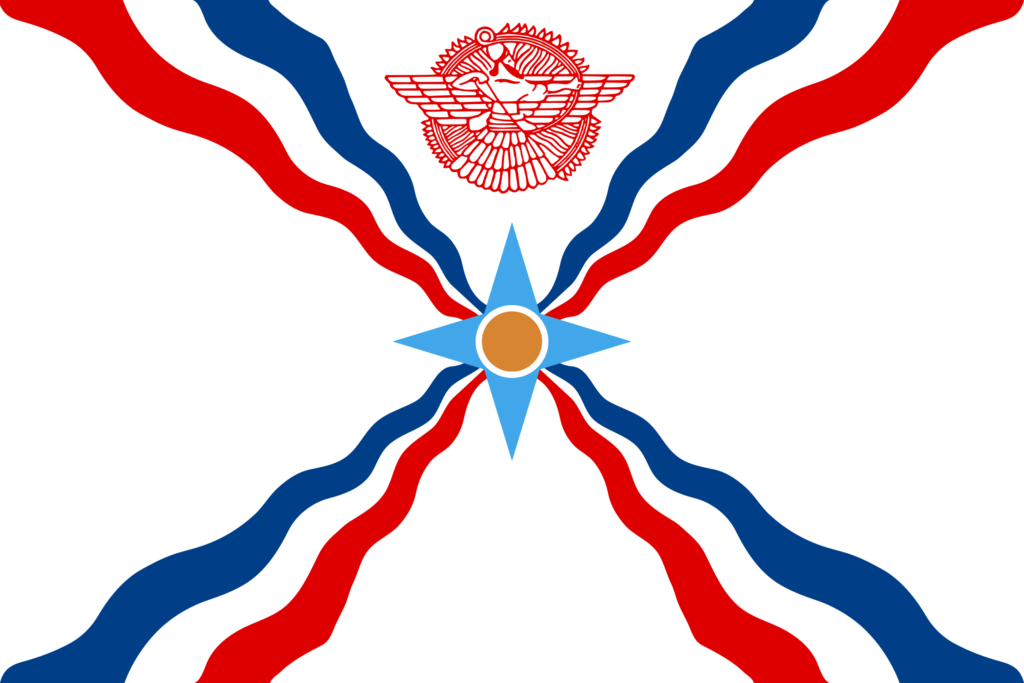
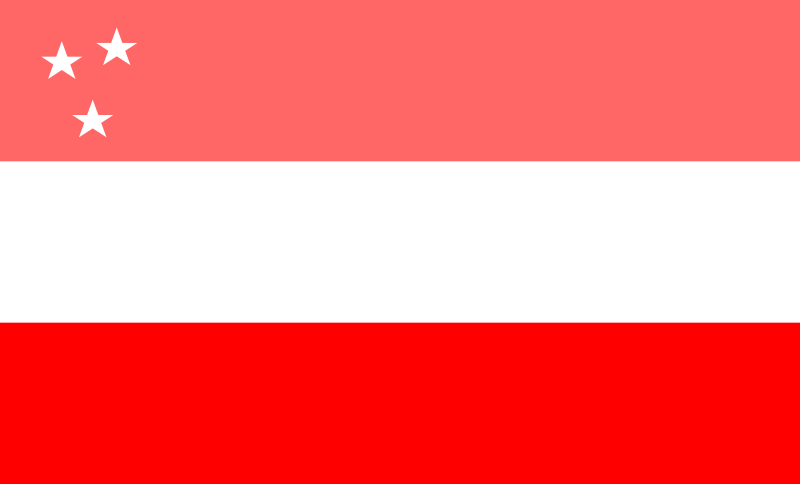 At one point, this was the official Assyrian flag, adopted prior to World War I. Created by the Syriac Orthodox community of Tur Abdin, the flag had three horizontal stripes in salmon, white, and red. On the salmon layer, there were three white stars positioned in the top left corner. These stars represented the three main churches of the Assyrian people: Church of the East, Chaldean Catholic Church, and Syriac Orthodox Church. The flag was used during delegation meetings between Assyrian politicians and Western leaders. This flag was abandoned in favor of Bit Atanus’s design.
At one point, this was the official Assyrian flag, adopted prior to World War I. Created by the Syriac Orthodox community of Tur Abdin, the flag had three horizontal stripes in salmon, white, and red. On the salmon layer, there were three white stars positioned in the top left corner. These stars represented the three main churches of the Assyrian people: Church of the East, Chaldean Catholic Church, and Syriac Orthodox Church. The flag was used during delegation meetings between Assyrian politicians and Western leaders. This flag was abandoned in favor of Bit Atanus’s design.